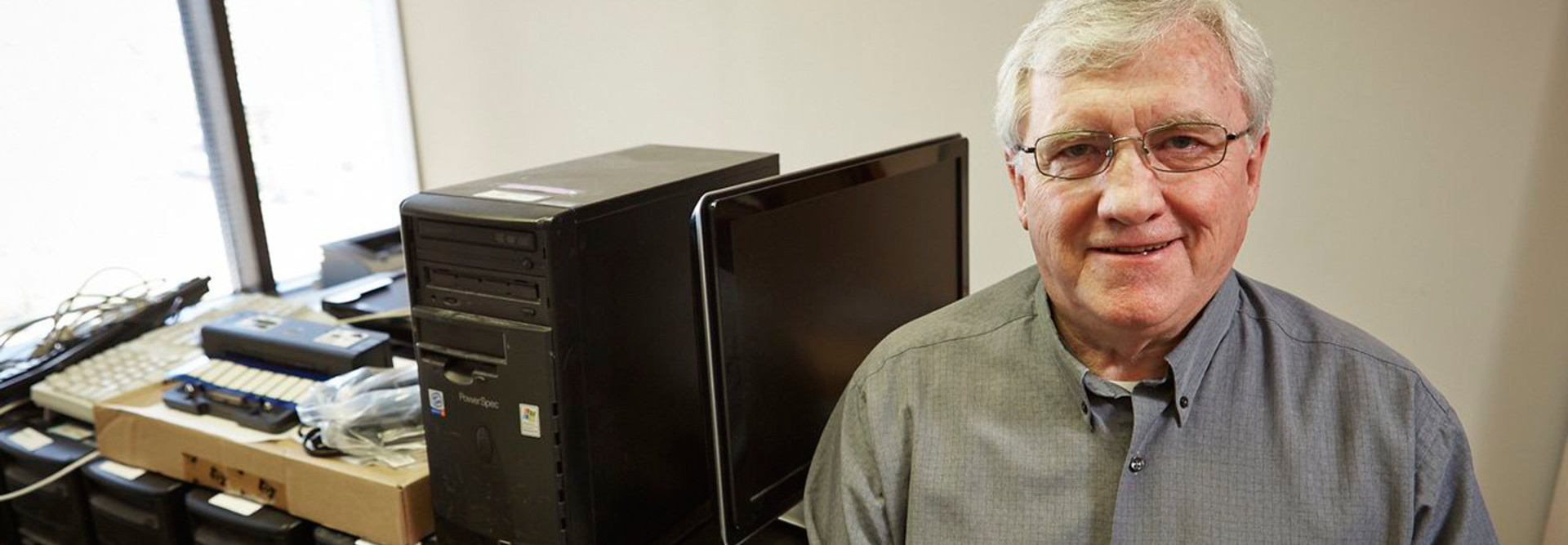Is Your Business Ready for VDI? Check for These 4 Indicators
How does a business determine whether client virtualization is a good fit for its environment?
One smart way is to look at how other companies evaluated their virtualization prospects and to learn from their insights. Ultimately, the approach taken depends on both user and infrastructure factors.
The following are four points at which IT and management teams might want to stop and evaluate the potential for migrating client systems to a virtualized environment.
In each case, CIOs offer their take on the advantages that a virtual desktop infrastructure (VDI) or other client virtualization strategy can deliver.
1. Your IT staff and infrastructure are maxed out.
In 2012, Walt Jarrell decided to virtualize desktops at the Frickey Law Firm. The timing was right: The Colorado firm, still running Windows Server 2003 and XP, needed an infrastructure refresh and also wanted to migrate its business-critical case management system from Sybase to SQL Server. Further, Jarrell, an IT staff of one, needed to reduce the time spent maintaining the 28 desktop systems in Frickey’s Lakewood and Denver offices.
“We saw definite advantages to desktop virtualization on the maintenance front and for better hardware utilization and reliability,” he says.
Frickey’s not alone in its thinking. Research firm Techaisle estimates that VDI spending by U.S. small businesses will triple from $132 million currently to $430 million by 2015. Drivers include a desire to reduce support costs and to centralize control and data access from anywhere, by any device.
Getting there, though, isn’t a cakewalk, and there’s “no one way to do it,” says Brett Waldman, an IDC analyst.
VDI delivers a user’s individualized desktop to a device to provide a full physical PC experience, but this makes it more costly than virtualizing in a Remote Desktop Services (RDS) environment. Static VDI — suited to employees who need a highly customized desktop — requires a one-to-one ratio of virtual machines (VMs) to users, while dynamic VDI stores one master desktop image that serves a pool of devices. RDS (or terminal server), which runs shared-session desktops, scales better but limits customization.
Jarrell had planned to go with dynamic VDI on Windows Server 2012, with Windows 7 as the client operating system because it would be easier for employees to transition to than Windows 8. Ultimately, he chose RDS — even though that now requires Windows 8 — to ensure a consistent desktop experience for attorneys and staff.
Since March, Frickey has been running new IBM servers hosting Hyper-V VMs for application, database and proxy services for sessions and remote access, as well as a new storage area network and HP thin clients. Jarrell is installing Microsoft’s Desktop experience, which provides some Windows 7 capabilities, to run Media Player — Frickey’s choice for viewing video. Overall, Jarrell says, “our hardware has much more capability, and virtualizing allows us to maximize that.”
2. You need to optimize IT efficiencies.
EmpireCLS, a Norwood, N.J.-based luxury ground transportation company, virtualized its clients in 2009, taking advantage of new capabilities in Windows Server 2008 R2. It aimed to reduce the time and money spent supporting PCs and notebooks, says CIO Alan Bourassa.
![]()
What’s the chief challenge to adopting desktop virtualization at your company?
30% End-user concerns
25% Bandwidth
19% Software licensing
14% Storage capacity
8% Upfront cost
4% Security
SOURCE: CDW poll of 279 BizTech readers
EmpireCLS adopted a hybrid approach using Microsoft Hyper-V, a plan that served its mixed user base. The desktops of 80 percent of employees, whose daily tasks are regimented — for example, workers in dispatch and reservations — are virtualized through RDS. The remaining 20 percent are VDI.
“Task workers only access a few applications, so they’re suited to RDS, sharing the same pool of resources and services through thin clients,” Bourassa says. “Executives, IT staff, programmers, and sales and marketing need more independence, so we give them a full physical experience through VDI.”
EmpireCLS has since deployed HP blade servers and Windows Server 2012, leveraging new automated management and virtualization features for improved hardware utilization and desktop response. They’ve reduced their server footprint and storage by factors of 12 and 30, respectively.
3. You want to re-allocate IT staff to value-added business activities.
EmpireCLS has also reduced help desk calls by 75 percent, but hasn’t cut IT staff. “We’ve been able to repurpose staff to build better infrastructure,” Bourassa says.
“Whether employees are on RDS or VDI, we can easily make changes across the board so we can spend our time on more important tasks,” adds Systems Engineer Bray Doherty.
When addressing claims that VDI is too expensive, Bourassa points to the operational efficiencies, energy savings, improved IT staff productivity and other returns achieved. “We’ve seen high cost savings from RDS when we use it,” he says. “But we still save money with VDI compared with the manpower required to run the help desk, handle trouble tickets and fix desktops.”
4. You need to lock down devices.
With many temporary worksites and two-thirds of its workforce in the field, Clark Builders has unique desktop challenges. In the past, superintendents had PCs at worksites, but networked data sharing was impossible and even collaborating via email was difficult. Worksites also are regularly looted, putting data at risk if PCs are stolen, says Dean Doige, CIO at Clark, based in Edmonton, Alberta, Canada.
For these reasons, Clark virtualized apps using Citrix XenApp, so all data resides on central servers. Doige next plans to virtualize desktops using XenDesktop. Although the company has successfully virtualized enterprise resource planning, Microsoft Office and project management apps for 420 users, it wants to implement 3D-rendering for building information modeling (BIM) software.
“Employees haven’t been heavy users, so virtualizing the entire desktop wasn’t necessary,” Doige says. “But app virtualization isn’t a good solution for BIM; its resource demands require VDI.”
Despite complexities, desktop virtualization can significantly improve IT management and security for locked-down systems. “You typically don’t see the capital expenditure savings you do with server virtualization, but you can see savings on the operational side through centralized management, delivery of updates and patches, and disaster recovery,” IDC’s Waldman









